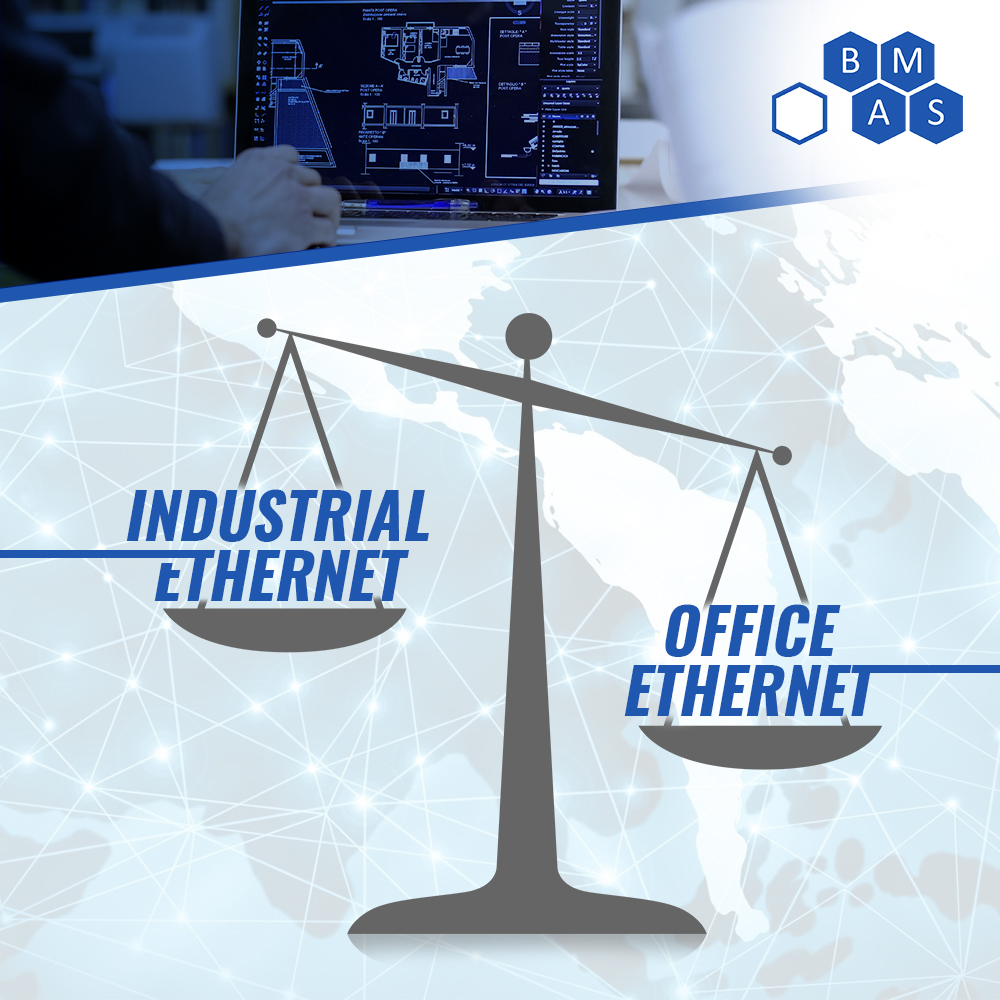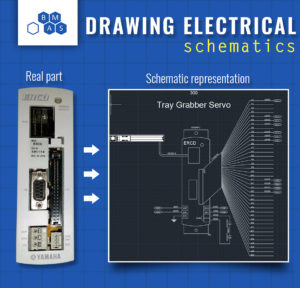
There was a time when industrial field networks all had different hardware requirements. HART requires a unit capable of injecting and reading signals overlaid on an analog signal, RS232 requires two signal wires and a ground, and RS485 requires two pairs of differential signal wires. Machine builders and end users alike had to invest in cables, adapters, and training to service all the different networks. While these networks still exist, they’re losing popularity for new installations. Ethernet has overtaken all other standards, accounting for 52% of new installations according to HMS Industrial Networks’ annual study in 2018. And there’s no sign this trend will slow down any time soon.
This convergence is great because it means we don’t have to learn so many different standards, or keep special cables around. We’ve already seen Ethernet in our homes and offices. We’re familiar with the blue cables, the chincy clear plastic RJ-45 connectors, and the Linksys routers in our basements. A lot of that familiarity can support our Ethernet use in industrial automation, but there are some important differences to be aware of. This article is based on “Industrial Ethernet Design Guide,” available at breen-machine.com/ebook.
Determinism
We often hear network speed defined in terms of megabits per second (MB/s). In industrial applications, network hardware is most often rated for 100 MB/s, with 1000 MB/s slowly gaining popularity. In the office, this is usually the important speed metric, but in an industrial control network, determinism is most important. When we’re controlling or monitoring real events at high speed, we have to communicate with devices in a consistent time frame. If a printer on an office network sees a 2-second delay in the middle of receiving a document, that’s no problem, but if a servo has to wait that long, it could be catastrophic. The most important design consideration here is to keep your automation network separate from the office network.
Noise Immunity
The industrial environment is electromagnetically noisy. There are large currents, often driven by switching power devices like VFDs that are notorious for creating high frequency harmonics and electromagnetic interference (EMI) that can affect other devices. We’ve got a few options for reducing EMI’s effect on our network – segregation, twisting signal pairs, bonding, and shielding. A good design will include all four.
There’s a lot to know here (sometimes EMI practices almost seem like black magic and voodoo), but following manufacturer’s recommendations will get you most of the way there. For example, VFD manuals always talk about grounding and bonding. Don’t skip that section!
Environmental Ratings
Industrial environments can be very harsh on components. Extreme temperatures, moving parts, reactive chemicals, and high voltages are all common. Each cable and device needs to be rated for the environment, or enclosed to protect it.
Network cables can be purchased to resist all sorts of harsh environments. All cables must have insulation rated for the highest voltage in the enclosure or wireway. That means, even though Ethernet is low-voltage, it often still needs a 600V rated jacket. If the cable will be flexed during normal operation, get a flex-rated cable. If it’ll be routed through an exposed tray, NEC requires a tougher jacket to protect against mechanical damage (buy a tray-rated cable). For other mechanically-challenging environments, there are crush-rated and abrasion-resistant cables. And finally, cables can be acquired with ratings for extreme temperatures, flame resistance, and oil/chemical resistance (read the datasheet).
Protocols
When we plug in an Ethernet cable at the office, we can usually expect it to just work. We don’t need to know what’s going on inside the cable. However, in industry, not all Ethernet is compatible, so we have to know a little more about what’s going on.
A protocol is a language that devices use to communicate over an Ethernet cable. Often, protocols are used in layers, with a low-level protocol providing the foundation for a high-level protocol. Since industrial applications have different needs than building/office/home networks, protocols exist to specifically fit these needs, each with its own trade-offs. When an industrial protocol is defined “on top of” a widely used protocol (often TCP/IP), standard architectures and hardware can be used. When a protocol is defined at a low level (stacked on few other protocols), architecture and hardware options may be more limited. The other tradeoff between these two broad categories is performance. A low-level protocol will usually be more deterministic than a high-level protocol.
In practice, Ethernet protocol is usually dictated by PLC choice. Each PLC manufacturer has a preference, and while some offer a few options, you’ll usually get the best results (easiest implementation, best support) if you stick with that manufacturer’s standard. For example, Allen Bradley uses Ethernet/IP, Siemens uses Profinet, and Beckhoff uses EtherCAT. Each of these manufacturers has played a key role in the standards organization that defines their favorite protocol.
Summary
Wide adoption of Ethernet brings a lot of benefits to automation (and the people who build and maintain it!). We get to re-purpose robust standards, tools, and personal experience from the IT world. Adding a dusting of industrial intent turns these standards into a flexible, powerful, easy to use communication standard to power our automation. And as always, knowing is half the battle. The small differences between office and industrial Ethernet can mean the difference between headaches and smooth sailing. Don’t let those little things get in the way. Keep learning, pay attention to the details, and live the good life with Ethernet.
If you’re ready to keep learning, download the free Industrial Ethernet Design Guide for all the juicy details.

About the Author
Jon is an engineer, entrepreneur, and teacher. His passion is creating and improving the systems that enhance human life, from automating repetitive tasks to empowering people in their careers. In his spare time, Jon enjoys engineering biological systems in his yard (gardening).









